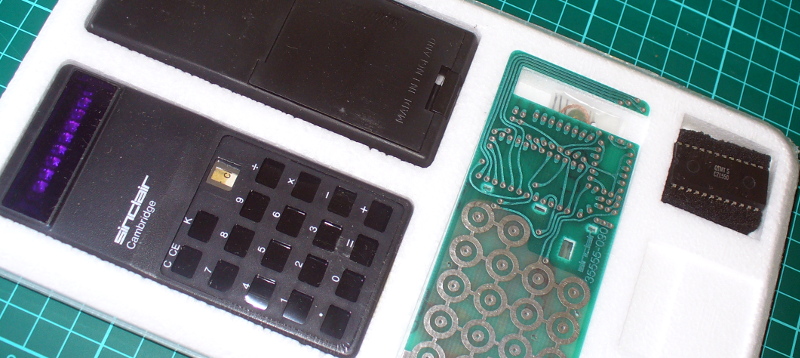Last month we touched upon the world of 1970s calculators with a teardown of a vintage Sinclair, and in the follow-up were sent an interesting link: a review of a classic Sinclair calculator kit from [John Boxall]. It’s a few years old now, from 2013, but since it passed us by at the time and there was clearly some interest in our recent teardown, it’s presented here for your interest.
It seems odd in 2017 that a calculator might be sold as a kit, but when you consider that in the early 1970s it would have represented an extremely expensive luxury purchase it makes some sense that electronics enthusiasts who were handy with a soldering iron might consider the cost saving of self-assembly to be worthwhile. The £24.95 price tag sounds pretty reasonable but translates to nearly £245 ($320) in today’s terms so was hardly cheap. The calculator in question is a Sinclair Cambridge, the arithmetic-only predecessor to the Sinclair Scientific we tore down, and judging by the date code on its display driver chip it dates from September 1974.
As a rare eBay find that had sat in storage for so long it was clear that some of the parts had suffered a little during the intervening years. The discrete components were replaced with modern equivalents, including a missing 1N914 diode, and the display was secured in its flush-fitting well in the board with wire links. The General Instrument calculator chip differs from the Texas Instruments part used in the Scientific, but otherwise the two calculators share many similarities. A full set of the notoriously fragile Sinclair battery clips are in place, with luck they’ll resist the urge to snap. A particularly neat touch is the inclusion of a length of solder and some solder wick, what seems straightforward to eyes used to surface-mount must have been impossibly fiddly to those brought up soldering tube bases.
The build raises an interesting question: is it sacrilege to take a rare survivor like this kit, and assemble it? Would you do it? We’d hesitate, maybe. But having done so it makes for a fascinating extra look at a Sinclair Cambridge, so is definitely worth a read. If you want to see the calculator in action he’s posted a video which we’ve put below the break, and if you need more detail including full-resolution pictures of the kit manual, he’s put up a Flickr gallery.
If you didn’t see it when it came out, compare this build with our Sinclair Scientific teardown. Meanwhile [John]’s work has graced these pages quite a few times, of which just one is this Arduino real-time clock.
Thanks for the tip, [Spencer].
















I wonder how difficult it would be to pull together a new kit?
I considered making a Sinclair Scientific kit, since I had recently scratch-built an early digital clock (including buying components by sending international money orders to California, but that’s another story).
I decided to simply buy a working calculator, because of Sinclair’s reputation. For years before that Sinclair had been selling cheap kits for audio amplifiers, a very popular item at that time. But the electronics magazines were full of stories of kits that didn’t work and of the difficulty of getting refunds or replacements from Sinclair.
It got better with his Spectrum computers, but even in the 80s he had a strong tendency to cut costs by removing one component too many. (That story came from someone that worked on the MicroDrive).
I wonder if similar bubble LED 7-seg displays are still in production somewhere. Perhaps it would be more probable with their ruggedized, mil-spec equivalents?
Even Sinclair had trouble putting some of their stuff together, and that was with the benefit of a fully equipped production line. I vaguely remember a line of Sinclair LED watches some time in the early to mid seventies that they had a bit of trouble with. Quite a substantial number were either failing QC or were being sent back as broken. Their response to that was to stick an advert in the back of the Exchange and Mart (the Gumtree of its day) actually trying to sell them as broken. “You might find that all it needs is a new battery” they said, not even hinting at how complex a manoeuvre it was to change one, nor that you’d need to do so again in another week or two. Lots more detail here
http://rk.nvg.ntnu.no/sinclair/other/blackwatch.htm
Many Spectrums were returned ‘faulty’. So many, that the returns process was to open them up, put a sticker dot on them, and send them back out as new. If you got one returned already with a sticker, it got thrown in the skip.
Why am I not surprised.
But then it sounds like many companies continue to do that with, especially, hard disk drives.
crowd-sourced QA
ugly and not stability botton. I cant press it fast.
very vaery small screen, only few digit
“It’s a few years old now, from 2013, but since it passed us by at the time” that’s the closest I’ve ever seen to somebody admitting to a slow news day.
I have an old zx81 kit sitting on my shelf…. wonder if I should build it.